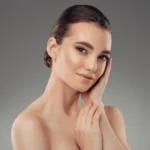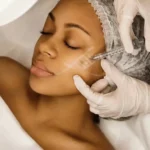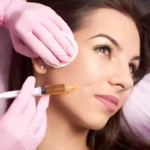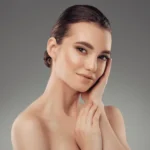

A meaningful comparison between injectable dermal fillers can be difficult to undertake. Although there are many injectable fillers on the market, many have very few or zero high-quality randomized controlled trials to support their use. This gives rise to a lack of guidance on both the efficacy and safety of these products. Fortunately, the brands of hyaluronic acid dermal fillers that will be discussed in this article, Teosyal and Juvederm, are proven to be beneficial to patients.
Differences Between Teosyal and Juvederm
Teosyal is a hyaluronic acid dermal filler brand that is manufactured by Teoxane Laboratories. They offer two product lines – Classic and PureSense, the latter of which contains lidocaine, a local anesthetic agent that improves patient comfort, as well as Teosyal Global Action, Deep Lines, Kiss, and Ultra Deep.
This is not an exhaustive list, as their available products vary by country. As their names suggest, Teosyal’s fillers have different clinical applications, as they differ in hyaluronic acid content and cross-linking, which are important factors in determining the character of hyaluronic acid dermal fillers.
With the launch of Teosyal RHA, their newest products, they aim to produce additional fillers with specific indications to order to yield better results.
Juvederm fillers, on the other hand, are manufactured by Allergan, which is headquartered in Dublin, Ireland. There are two Juvederm product lines: one that uses Hylacross technology and another that uses Vycross technology. Both Hylacross and Vycross are proprietary hyaluronic acid cross-linking technologies.
Juvederm Ultra and Ultra Plus are from the Hylacross product line and mainly treat the lips, nasolabial folds, and marionette lines.
These products are suited for these indications due to their high cohesivity, which plays a crucial role in their lifting prowess and efficacy. These fillers contain high-molecular-weight hyaluronic acid and, as such, attract water at a greater rate than Vycross products. Their higher concentration of hyaluronic acid also increases their duration of action.
Vycross fillers include Juvederm Voluma, Vollure, and Volbella. These products have more specific indications than their Hylacross counterparts due to their unique initial moldability, which is only possible due to their lower cohesivity. Vycross products consist of both high- and low-molecular-weight hyaluronic acid, a combination that results in less gel swelling due to lower water uptake.
Differences in Patient Satisfaction
Both Teosyal and Juvederm are proven to produce satisfactory results when compared to other hyaluronic acid-based fillers.
One high-quality randomized controlled trial compared Teosyal Deep Lines with another hyaluronic acid-based filler in 60 participants with moderate-to-severe nasolabial folds. Both products were efficacious immediately after injection and had good durability over time. Although the two products were comparable in terms of results, patient tolerance, and side effects, many participants preferred the results of Teosyal Deep Lines over the other filler.
Convincing evidence regarding the efficiency and safety of Juvederm fillers comes from a multicenter, double-blind, randomized trial by Baumann et al. that was carried out in 2006. This trial compared bovine collagen and Juvederm Ultra and Ultra Plus in respect to nasolabial fold treatment, and in it, the Juvederm fillers had better product longevity in patients with comparable injection-related local site reactions to those of the bovine collagen treatment. Subsequently published literature on Juvederm fillers continued to show consistently promising results in line with other hyaluronic acid dermal fillers.
Both Juvederm and Teosyal have a similar mechanism of action, list of ingredients, and duration of action, making them very similar in terms of efficacy and safety. Either brand can help achieve a desired look, with the deciding factor lying mostly in practitioner and patient preference.
Aesthetic products generally refer to a broad category of items designed to enhance or improve one's appearance, often focusing on skincare, beauty, and personal grooming. These products are typically used to maintain or enhance physical attractiveness and may include a wide range of items intended for both professional and personal use. Here are some common types of aesthetic products:
-
Skincare Products: Including cleansers, moisturizers, serums, and treatments designed to address various skin concerns such as acne, aging, hyperpigmentation, and sensitivity.
-
Cosmetics: Makeup products such as foundations, concealers, eyeliners, lipsticks, and eyeshadows used to enhance facial features and achieve desired looks.
-
Hair Care Products: Shampoos, conditioners, styling products, and treatments to maintain and improve the health and appearance of hair.
-
Fragrances: Perfumes and colognes used to enhance personal scent and attractiveness.
-
Dental Care Products: Toothpaste, mouthwash, whitening treatments, and dental floss aimed at maintaining oral hygiene and enhancing smile aesthetics.
-
Personal Grooming Tools: Including razors, electric shavers, trimmers, and grooming kits used for hair removal and personal hygiene.
-
Beauty Devices: Devices such as facial cleansing brushes, LED light therapy masks, and microcurrent devices designed for at-home skincare treatments.
-
Nutritional Supplements: Supplements aimed at promoting skin health, hair growth, and overall well-being, often containing vitamins, minerals, and antioxidants.




